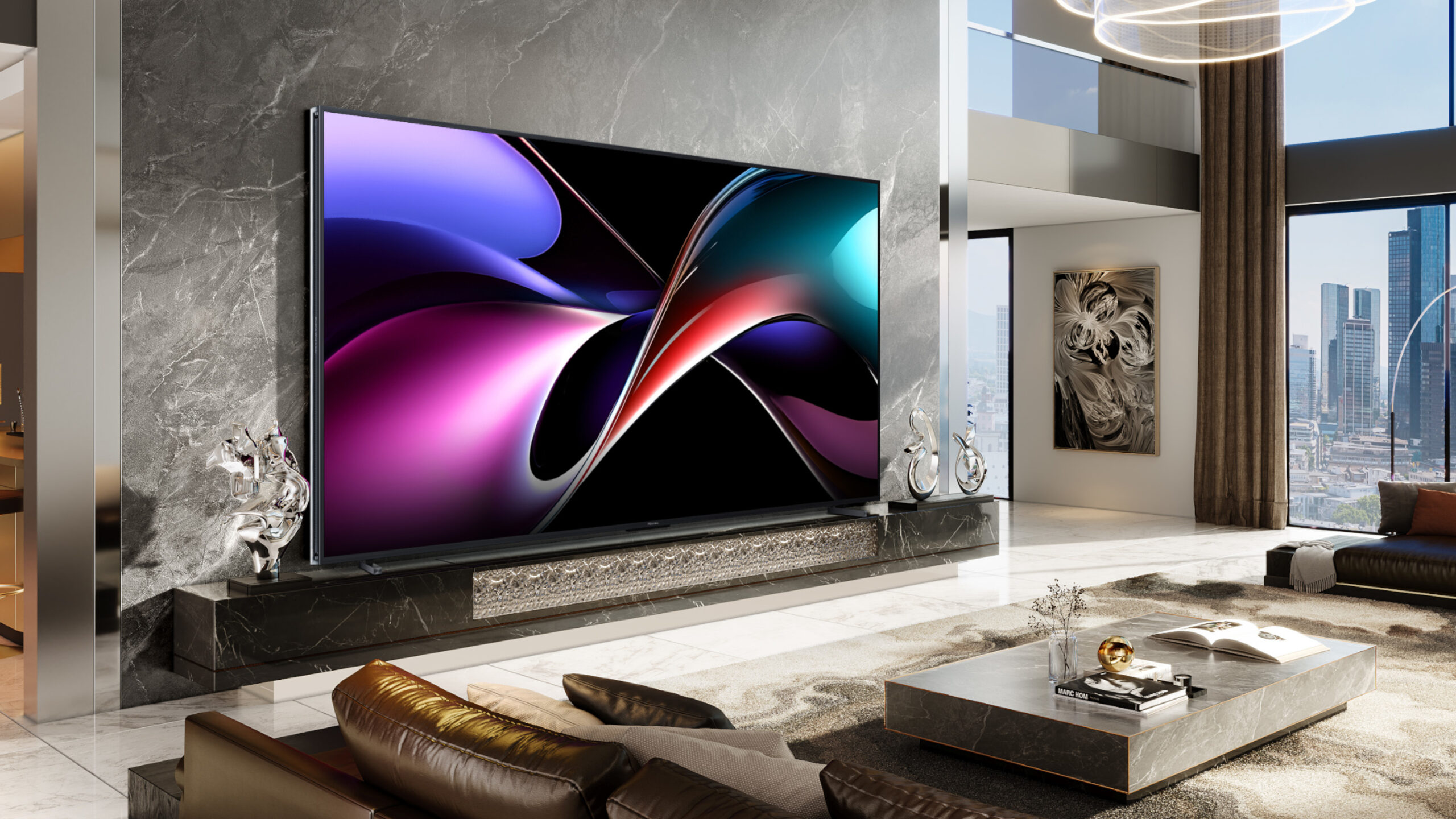Blog
Holy cow — this TV just became the first to hit 5,000 nits of brightness in our test lab

I’ve been testing and reviewing TVs for over ten years and I’ve never seen a TV hit 5,000 nits of brightness. Until now.
The Hisense 116UX — a larger-than-life, 116-inch beast of a TV — just crossed the 5,000-nit mark in our test lab. I certainly can’t speak for the entire TV-testing community, but for me, this is a first.
Take a look at how the 116UX compares to other TVs that are among the brightest in their class:
| Header Cell – Column 0 | Hisense 116UX | Hisense U8QG | LG G5 OLED | TCL QM6K |
|---|---|---|---|---|
SDR Brightness (10%, in nits) | 2,137 | 2,908 | 465 | 695 |
HDR Brightness (10%, in nits) | 5,441 | 3,916 | 2,296 | 688 |
In its most-accurate picture mode (Filmmaker), the 116UX offers devastatingly bright HDR highlights. On a 10% white window, the 116UX is scraping 5,500 nits.
To put it in perspective, that’s about five times as bright as the LG C5 OLED in HDR.
How is the 116UX pulling this off?
Unveiled at CES 2025 back in January, the 116UX is the first of its kind: a TriChroma LED TV.
Like most of Hisense’s 2025 TV lineup, the 116UX leverages Mini-LEDs, but they’re different from what you’ll find on TVs like the Hisense U8QG.
Hisense’s TriChroma LED technology taps clusters of tiny lenses, each reacting to red-, green- and blue-colored LEDs. Along with other performance-related benefits, this tech is much more energy efficient than standard Mini-LEDs. With less light lost in this process, we’re left with a brighter picture.
You’ll have to just take my word for it: It’s mad bright.
If you’re wondering what the 116UX looks like in person, you’ll have to just take my word for it: It’s mad bright.
The first time I saw the Hisense 116UX, I stood close enough to the screen for the picture to completely fill my peripheral vision. Then I proceeded to stand there for several minutes as the brightness washed over me.
Now, if it was only a super-bright TV, it wouldn’t be much of an achievement — I recently delved into the importance of TV brightness, noting how a TV’s ability to get dark is a critical part of our perception of its overall brightness.
It’s all about contrast and, thankfully, while the 116UX isn’t capable of perfect black levels like an OLED TV, its TriChroma LED display allows for deep, rich black levels when necessary. Combined with the brightness, the contrast is off the charts.
Where can I buy the Hisense 116UX?
You’ll need to track this one down and then pay a hefty price for the privilege. Right now, the Hisense 116UX is listed on Best Buy for a cool $29,999. (No big deal, right?)
Unfortunately, at the time of publishing, this giant, expensive TV is also very much out of stock.
If you’re wondering when this exciting display technology will make its way to smaller-sized models, be prepared to wait. Traditionally, new TV hardware takes a while to shrink down to 55-, 65- and even 75-inch models.
The next best thing is very much within reach, however.
The aforementioned Hisense U8QG — one of the brand’s top Mini-LED TVs for 2025 — is the second brightest TV we’ve tested this year. And, while it doesn’t eclipse the 5,000-nit mark, it’s still as bright as all get out.
The U8QG delivers HDR highlight brightness well over 3,500 nits. It’s quite cinematic with the lights off, and if you’ve got a sun-soaked living room, it’s well equipped to stand out during the day.
Best of all, at around $1,279, the 65-inch U8QG isn’t the price of a new car.
We’ll be keeping our eye on the 116UX and any developments in the Hisense TriChroma LED space — especially when competing models from brands like Samsung and Sony enter the fray.












